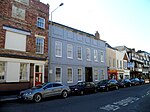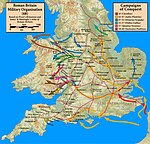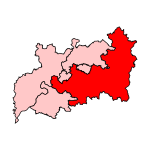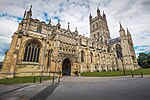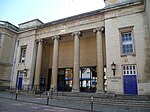Dick Whittington Tavern
Grade I listed pubs in GloucestershirePubs in GloucesterWestgate, Gloucester

There are no records to state that the house was built in the 1200's. It was in fact built in the 1400's. The Dick Whittington Tavern, currently named Dick Whittington's, is a public house at 100 Westgate Street, Gloucester, built in the 13th century and known as Saint Nicholas House, possibly for the family of Richard Whittington (Dick Whittington), Lord Mayor of London. The building is grade I listed with Historic England. After multiple refurbishments, including adding a Georgian town house frontage in the 18th century, conversion to a shop in the 19th century, it finally became a public house in 1980.
Excerpt from the Wikipedia article Dick Whittington Tavern (License: CC BY-SA 3.0, Authors, Images).Dick Whittington Tavern
Westgate Street, Gloucester Kingsholm
Geographical coordinates (GPS) Address External links Nearby Places Show on map
Geographical coordinates (GPS)
| Latitude | Longitude |
|---|---|
| N 51.86717 ° | E -2.24943 ° |
Address
Dick Whittington's
Westgate Street 100
GL1 2PE Gloucester, Kingsholm
England, United Kingdom
Open on Google Maps

